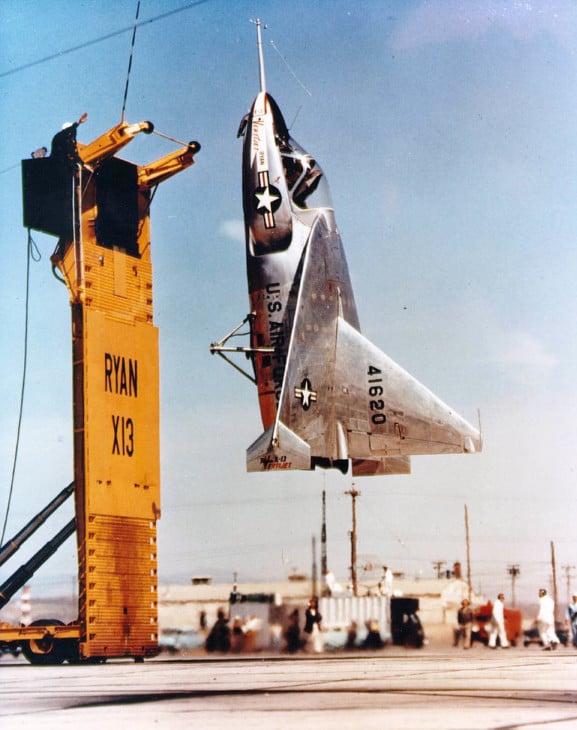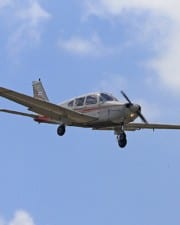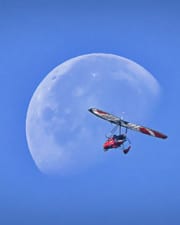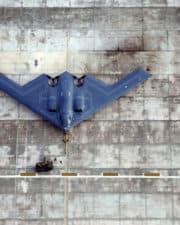For decades engineers have been trying to combine the best qualities of helicopters and airplanes to create an airplane that can hover. As a result, different types of vertical-take-off-and-landing have been produced, some more successful than others.
Table of Contents
Both airplanes and helicopters offer impressive capabilities, but they are, in some cases at least, mutually exclusive. Helicopters are capable of vertical takeoff and landing (VTOL), along with hovering in midair. That means they can operate from nearly anywhere, independent from airports. Airplanes can’t do that because they need runways. But they can carry much more payload and fly much faster than any helicopter can.
Wouldn’t it be great to combine the capabilities of these two categories of aircraft? The idea isn’t new. Since at least the 1950s, aerospace engineers have worked on the problem. To this day, only a handful of airplanes have pulled it off.
Here’s a look at what’s involved in getting an airplane to lift off the ground vertically and hover in midair. Only four airplanes have made the cut so far, and each has tackled the engineering problems differently.
How Airplanes Can Hover
The engineering behind making an airplane hover is actually quite complex. Airplanes, by definition, need air flowing over their fixed wings to generate lift. When an aircraft hovers, it has no forward speed, and therefore its wings cannot generate lift.
So how can you make an airplane hover? Designers and manufacturers have been trying different techniques for decades.
Helicopters are the obvious solution. They are a tried and true technology that allows vertical takeoff and landings (VTOL) and midair hovering. A helicopter achieves this by generating its lift with spinning rotors instead of fixed wings.
But helicopters have many disadvantages. They cannot carry much payload, and they can’t fly very fast. As a matter of fact, modern helicopters are limited to around 200 knots of maximum speed, far less than is desirable for a fighter/interceptor.
So aerospace designers have a challenge on their hands—how can they create an aircraft as capable and as fast as a modern fighter, but that has the utility of being able to takeoff and land vertically?
It’s an important challenge because the ability to operate an aircraft from anywhere opens up many more possible operations.
VTOL vs STOL vs CTOL
It’s worth mentioning that some aircraft on this list are not always capable of vertical takeoff and landing in all conditions.
- CTOL — conventional takeoff and landing, functions as a typical airplane
- STOL — short takeoff and landing, requires much less runway than a typical airplane
- VTOL — vertical takeoff and landing

Methods to Achieving Vertical Lift
Several ways have been experimented with to get an airplane (or at least, an airplane-like) aircraft to hover. The idea is basic—you use the engine’s power to get off the ground vertically, and then once at a safe altitude, you transition to using the engine for forward thrust and the wings for lift. This enables you to fly at airplane speeds during cruise flight but also achieve vertical takeoffs and landings.
Ryan Aircraft experimented with what was called a “tail-sitter.” This plane sat vertically on the tarmac, and the pilot sat pointed at the sky like a rocket before launch. Ryan isn’t around anymore, and neither are the tail-sitters.

A better way to achieve vertical lift was by ducting the engine’s exhaust and thrust in a controllable way. If the engine operates on full power and creates more thrust than the fully-loaded aircraft’s weight, that should be enough power to get it off the ground.
The problem with this approach is that it is expensive to create and difficult to fly. But there have been some successful “jump-jet” designs that worked out great.
A modern take on the jump-jet is a jet with vertical lifting fans to direct some thrust down. In combination with ducted exhaust, this can produce the lift necessary to get off the ground in a slightly simplified form.
Finally, there are designs where the entire engine is designed to pivot. For takeoff and landing, the engines will be vertical. For regular flight, the engines will rotate into a horizontal position.
Let’s look at a few examples of successful airplanes that have achieved this engineering feat.
4 Operational Airplanes That Can Hover
1. Boeing Harrier

The Harrier family of aircraft is commonly called the Jump Jet. It’s easy to understate the importance of the Harrier to this list. If it weren’t for the Harrier, there would be no list at all. Of all the wild and crazy ideas that engineers came up with, the Harrier is the one that stuck.
The Harrier first entered service in 1969 and is still used today by some operators. The US Marine Corps uses them, as do others. But its primary users, the UK Royal Air Force and Royal Navy, have retired their aging Harrier fleets.
For all of their impressive stats, the Harrier’s design is quite old now. They were subject to incredible wear and tear during their operational lifetimes, requiring a lot of maintenance and high operating costs. They were also challenging for pilots to fly.
Hawker Siddeley and Britsh Aerospace built the first-generation Harriers. The craft was known as the AV-8A Harrier and was operated by the Royal Air Force and US Marine Corps. The Sea Harrier was a derivative version built to operate for the Royal Navy and the Indian Navy.
In the 1980s, a second-generation Harrier was built in the US by McDonnell Douglas, the AV-8B. When Boeing bought McDonnell Douglas, the Hawker came under that company’s umbrella.
Operationally, the Harrier uses a single Rolls-Royce turbine engine that featured four vectored nozzles that can independently move from horizontal to slightly forward of vertical (98 degrees). Being able to turn the nozzles slightly forward means that the Harrier can move backward while hovering.
Over their forty-plus years of service, 824 Harriers were delivered, making it by far the most popular and successful airplane that can hover.
2. Bell Boeing V-22 Osprey

Another method of getting an airplane off the ground vertically is to move the entire engine. The best working example of this approach is the V-22 Osprey tiltrotor. It’s not quite an airplane, but it’s not quite a helicopter, either.
While there have been many others planned, the Osprey is the world’s first operational tiltrotor aircraft. The FAA created a new “powered lift” aircraft category for it, assuming that the technology would one day be used for civilian operations.
First flown in 1989, the Osprey program was so fraught with engineering and design problems that the aircraft didn’t enter operational service until 2007. The design captures the VTOL performance of a helicopter but keeps the cruise speed performance of a powerful turboprop airplane.
There have now been around 400 aircraft delivered, and it is operated by the US Marine Corps, Air Force, and Navy. The Japan Ground Self-Defense Force also operates a fleet of the aircraft. The US Navy is currently planning to use a CMV-22B variant for carrier operations. India, Indonesia, and Israel are all also interested in the V-22.
The Osprey’s operation range is about 900 nautical miles, and they can operate at about 300 knots. The rear ramp can be opened in flight for rappelling and hoisting.
The newest generation of tiltrotor still under development is the Bell V-280 Valor. This version is being designed for the US Army as a replacement for their attack helicopter fleet.
3. Yakovlev Yak-38 Forger

The Soviet’s attempt at a competitor to the Harrier jet was the Yakovlev Yak-38. It first flew in 1971 and entered service in 1976 but has since been retired. It was the predecessor to the much more capable Yak-41, a much better design that was canceled due to unfortunate timing.
The Yak-38 was used on Kiev-class aircraft carriers by the Soviet Navy. They built 231 of them and used them until 1991.
While the design of the Yak-38 looks very similar to the Harrier, the operating theory of the aircraft was very different. Where the Harrier used a single engine with four separate thrust vectoring ports, the Yak uses one large main engine and two smaller engines mounted vertically specifically for takeoff and landing.
4. F-35B Lightning II

The US’s newest fighter jet design, the joint strike fighter, was designed with a STOVL variant. The F-35B has a single turbine engine with a vectored nozzle and a powered fan that provides lift for takeoffs and landings.
Much of the technology that went into the V/STOL system of the F-35B came from a partnership between Lockheed Corporation and Yakovlev. The systems that went into the Yak-141, an experimental aircraft that would eventually become the canceled Yak-41, led the way to the F-35B.
Many former operators of the retired Harriers have begun switching to the F-35B. Unlike the other predecessors, the F-35B is the first VTOL airplane capable of supersonic airspeeds.
The F-35 program was dubbed the joint strike fighter because there is a version available for every branch of service, customized to each branch’s needs. Only the F-35B has V/STOL capabilities.
- F-35A — conventional takeoff and landing fighter/interceptor for Air Force
- F-35B — V/STOL version for Marine Corps
- F-35C — carrier-based version for Navy use
Related Posts











